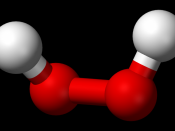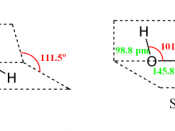Introduction
An enzyme is a is one of many specialised organic substances designed to act as a catalyst to regulate the rate of the many chemical reactions that done in the human body, enzymes are classified into many major categories these include hydrolytic, oxidising and reducing depending on what part of a reaction they play.
Enzymes specifically are large proteins that speed up chemical reactions in the body, they do this by bringing together a small number of amino acids for form the active site (the location on the enzyme where the substrate binds and the reaction takes place (see lock and key theory)) the enzyme itself in unaffected by the reaction. After having taken place the enzyme is ready to bind again with a new substrate.
The Lock and Key Theory
The Lock and Key theory says that when the substrate attempts to bind with an enzyme at the active site that the enzyme and the substrate have an appropriate molecular design so that substrate cannot join on to an enzyme that it is not supposed to.
In essence this give a "lock and key" if the incorrect substrate attempts to bind with a enzyme it will be unable to as the "key" will be unable to fit in the "lock" causing no reaction, however if the correct substrate is used then the key will fit and a reaction will occur. This prevents the incorrect substrate reaction with an enzyme.
Properties of Enzymes
Enzymes are organic and can therefore be denatured, and the surrounding environment can affect the rate in which their various reactions occurs. For example temperature is extremely important in the process, if the temperature is too high the enzyme will be denatured, and if the temperature is too low the reaction will not occur or will...


